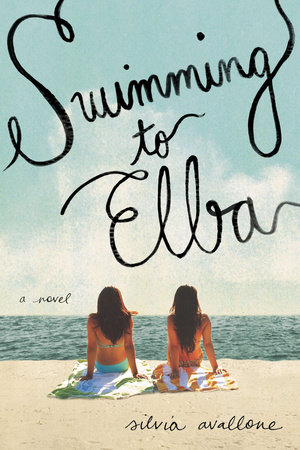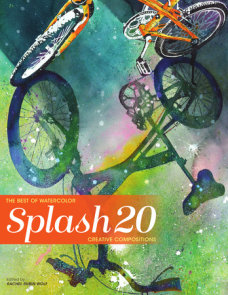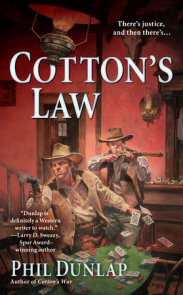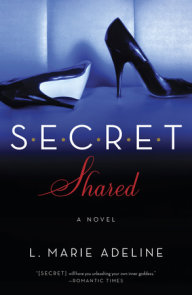READERS GUIDE
Questions and Topics for Discussion
INTRODUCTION
“If you watched them, you couldn’t help but envy their breasts, their asses, their shameless smiles that said: I exist” (p. 12).
Anna and Francesca have always been best friends. Inseparable since they were toddlers, the two have grown up playing together in and around the squalid public housing complex they call home. The summer after both girls turn thirteen, however, their already nubile bodies attract temptations and challenges that neither they—nor their friendship—may be able to withstand.
For those unfortunate enough to lack friends, life in Italy’s Via Stalingrado is unbearably grim. The impoverished seaside town is filthy from pollution spewed by its biggest employer, the Luccini Steel Mill. Recently, the plant’s owners began outsourcing production to countries with cheaper labor. Unemployment has risen and the remaining workers are left to toil amid “the wastelands of the last big industrial sheds” (p. 18).
Like many, Anna and Francesca dream of running away to the nearby resort town of Elba, but have never dared to make the trip—even though Elba’s pristine white beaches are just a short ferry ride away. Instead, they while away the summer of 2001 in their skimpiest swimsuits, provoking lascivious comments from admiring males of every age.
Yet not everyone is happy to see Anna and Francesca practice their newfound allures. Less attractive peers and older girls past their heyday seethe with jealousy. Closer to home, Anna’s protective older brother, Alessio, can’t “wrap his mind around the fact that Anna was already sneaking into cabanas with boys” (p. 19), and Francesca’s father, Enrico, finds himself both fascinated and enraged by his daughter’s maturing body.
Like most of the men in town, Alessio and Enrico work at the steel mill. Enrico is a stolid giant who rules his household with self–righteous brutality, while handsome Alessio is the local playboy with a harem of young women eager to win his favors—but both are willing to employ violence to protect their own. Despite their carefree attitudes, Anna and Francesca are aware that their childhoods are drawing to a close. In the fall, Francesca would be attending the regular high school while “Anna would be going to the liceo classico with the other smart kids” (p. 24). Francesca—whose feelings for Anna go beyond mere friendship—fears that Anna’s ambitions will take her somewhere Francesca won’t be able to follow.
One night, Alessio unexpectedly runs into an old friend. “Mattia was the classic cool guy with a penchant for trouble” (p. 112). After a run–in with the law, Mattia had fled to Russia for several years. Now he’s back in Via Stalingrado, and his return sets in motion a chain of events that will engulf them all.
ABOUT SILVIA AVALLONE
Silvia Avallone is an Italian poet and novelist. Published in Italy as Acciaio (Steel), Swimming to Elba won second place in the 2010 Premio Strega, and rights have been sold in fourteen countries. Avallone is twenty– seven years old and this is her first novel.
A CONVERSATION WITH SILVIA AVALLONE
Q. In Italy, your book was compared to The Catcher in the Rye for the powerful way it portrayed the disillusion of one generation’s dreams through the sardonic, dangerous, and aimless narration of the next generations’ lives and caused a controversial stir with leftist thinkers in Italy– What do you think of this comparison?
It’s quite an honor to think that Swimming to Elba has been compared to a classic of that stature, but I have to say that it’s excessive, and I don’t feel that I could claim such a comparison. Swimming to Elba is my first novel, my first stab at reconstructing through words and literature a world that I love, a world that is endangered: the provincial Italian world of industry at a time when industry is limping badly. I wanted to describe what it’s like to grow up in the provinces, the challenges and the beauty of being thirteen years old in an outlying area that’s ignored by the mass media. I wanted to tell the story of young factory workers in the world of today, the young men I grew up with who told me all about factories and steel mills from the inside: I wanted to show just how different they are from their blue collar fathers; I wanted to overturn the stereotype of the silent, alienated factory worker. I wanted to give people my age a voice. Give a voice to the world of labor, heavy industry, in a time when the virtual seems to have shoved the material into the shadows of silence. This is the material of the story I wanted to tell: the sheer weight of steel, the magic of how it’s made. And the raw material of bodies flowering into adolescence. I wanted to pose the problem of just what dreams are still possible in the forgotten Italian provinces, in the factories that are being emptied and dismantled. A silent, forgotten Italy: to me, the most beautiful Italy.
Q. Swimming to Elba reflects greatly on the dehumanizing effect of industry on the Italian provinces—can you speak about this a bit more?
Actually, to me, factories—and especially the giant plants and mills of heavy industry—are temples of power, magic, immense vitality. I wanted to re–create the Lucchini steel mill of Piombino the way it first appeared to my eyes as a young girl. I was captivated by its fumes and smoke, the smoke stacks, the daring adventure stories that boys who were seventeen, eighteen years old told me about the place. The young steelworkers who I knew brought me an image of life in the steel mill that was very different from how an outsider might envision it. It’s trench warfare in there; you’re constantly in danger of dying. At the same time, it’s a place where powerful friendships are made, where human solidarity is still conceivable, where they dream up amusements to tough it out, to challenge the inhumanity of the place with the grand and powerful humanity of heroes. When I was a young girl and I’d see my friends who were steelworkers show up at the beach after their eight–hour shifts and hurl themselves into the waves, I thought of them as young heroes. Their gaze has remained with me. Their voice has remained with me, when they told me the terror of accidents in the steel mill or the sheer adventure of a workday on the gantry crane. A steel mill is a place full of life, not just death; it’s a place of a remarkable dignity and humanity. It’s a world that in the West the mass media have often forgotten to talk about. And that’s not right. There are still factories, after all, and there are still factory workers. These are worlds that we should know more about, that we should learn to understand, find out how they have changed in this new millennium. We should listen to the new dreams and the new challenges faced by the young factory workers of today. When I first walked into the steel mills of Piombino, I felt a sense of boundless wonder: as if I were walking into the belly of dragon, deep into a volcano, or an interstellar city built in outer space.
Q. Swimming to Elba has sold in huge numbers internationally. Clearly, there’s a strong universal element at the heart of the story. Would you say there’s a strong Italian element at its heart as well? And if so, what is it?
The hand–to–hand battle with steel is an immense metaphor for life. So is that narrow stretch of sea that separates a place where people toil in the darkness from a resort island. Adolescence is an unsettling and perfect moment of life; it is everywhere and in a timeless fashion. A provincial quarter where the families struggle every day to make a decent living is a universal setting. Everything in Swimming to Elba is a metaphor. While I was writing it, I was mainly reading American novels: Don DeLillo, Philip Roth, Jonathan Franzen, and that great American novel that is Nabokov’s Lolita. The dying industrial provinces and the starving young people who live there is something that belongs to the entire Western world. But Italy is where I was born; it’s a familiar and mysterious place that I’m trying to understand and unveil in its most fascinating and hidden aspects. Italian women: Italian mothers and wives; the small Italian communities that still gather in the bars and the piazzas to argue about the news that they read in their daily newspapers; young Italians who grew up on the false televised mythologies of reality shows and cheap beauty, their hunger for an authentic life. This is just a small corner of Italy, beautiful, ravenous, contradictory, and genuine—and I wanted to show it to the world. And the idea that an American might choose to come spend his or her holidays in Piombino is perhaps one of my greatest dreams. Italy’s not just a postcard nation. It’s much more, and much more complex than that.
Q. Is there anything in your own background that informs your writing of the setting of Swimming to Elba?
I lived in Piombino for a few years, and I’ve spent every summer of my life there. For me, this industrial city overlooking the Isle of Elba has always been and remains the enchanted realm of adolescence for me: a place of sunny summer days, the seaside, the transformation of material. I could never have written Swimming to Elba if I hadn’t experienced the most powerful friendship of my life in this extraordinary place, a friendship that I have since lost; if I had not met here the countless minor Achilles of the steel mills. Racing down the road on motor scooters, the secret beaches, the communities of stray cats, the most intense things, radiant and dark at the same time, I experienced them all here, in the years in which I grew up and was transformed. Years that are lost, and yet eternally alive.
Q. You’re quite young and this is your first novel. Is there something new writers have to offer their readers that veteran novelists can’t?
Every generation of writers depicts the time they grew up in. And every period of time possesses something eternal and something new. Today in Italy young writers want to write about the world, open their minds to reality, denounce its glaring contradictions. No more personal diaries: novels. Because the world of today needs to be recounted through literature: the most powerful alternative to the often deeply unreal forms of narrative of television and other newer forms of technology. These days, literary narrative can exert a new kind of power: restore reality in all its physical presence, trigger a new sharing of experience, a new understanding. People still want stories, people still want meaning. My generation, compared with the generations that went before us, has a responsibility to start over again from zero and give life a new meaning: take on the downturn in the economy, in jobs, in society itself with new words.
Q. Is there any aspect of the book that you think will speak in particular to its American audience?
I can’t tell you how exciting it is to think that Swimming to Elba is being published in America. I grew up on American movies and television series, and reading American books. The United States is an intrinsic part of me, and it’s just like the Isle of Elba: a sort of complicated, beloved, fantastic, yearned after, unattainable paradise. When I read a novel by Jonathan Franzen or Don DeLillo, I always check my iPhone to see exactly where the city and places mentioned are actually located. When I write, I reconstruct certain spaces in my mind as if they were American: the vast panoramas, the allure of certain American settings as I manage to imagine them in my mind. And so I hope that American readers can sense, between the lines, something familiar in this book. That said, I hope that the American reading public might be intrigued by a different image of Italy: not just the Bel Paese, but also the outlying areas, the factories that our two continents have in common: I believe that in the 2000s, young people in Europe and America are facing very similar challenges. I hope that Americans might be as fascinated as I am by the profound humanity of these small Italian cities, by the power and strength of the mothers whose stories I’ve told, the beauty of the courtyards, the factories and mills, the bars and cafés, the secret places of the Italian peninsula.
Q. Are there any characters in this book that you feel you can relate to the most or that are based on anyone you know?
I can safely say that everything in Swimming to Elba is invented and that everything is real. Anna and Francesca are the hundreds of young girls that I watched strolling up and down the Corso on a Saturday afternoon holding hands. Alessio, Cristiano, and Mattia are the hundreds of young men that I saw racing past in souped–up cars on their way to the clubs and discos on a Saturday night. Sandra and Rosa are the many silent but courageous mothers that I’ve met and who I’ve seen struggling with grocery bags, bent over cleaning floors and keeping house, proud, sad, victims, in love with their husbands in spite of everything. And their husbands are often the many men I’ve met in cafés and bars, irresponsible and unforgivable, but deep down, just human beings themselves, like everyone. The characters of Swimming to Elba are all those people who deserve a chance.
Q. What do you want to write about next?
I never say what I want to write about because I’m superstitious and I’m always afraid that once I’ve revealed the mystery, the mystery will escape and I won’t be able to get it back. I only know what I want to write about once I’m writing about it. Novels bring themselves into the world, I just have to tend to them, help them through their birth pains, wait patiently for one chapter to turn into the next. I know only that I want to write another novel that’s a complete world unto itself, a world inhabited by vivid, living, rebellious characters. Another secret, contradictory, beautiful, and dolorous piece of Italy. And I want to do that in an ongoing dialogue with American writers, who are to my mind the greatest writers living in the world today.
DISCUSSION QUESTIONS






















